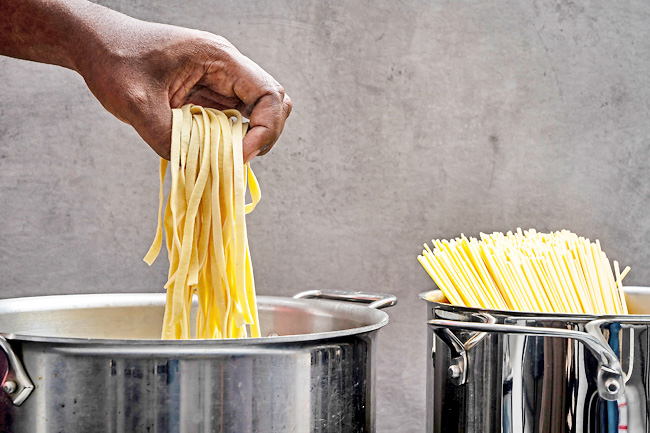Aaron Hutcherson
THE WASHINGTON POST – The world of pasta is vast. In addition to all of the different shapes that are available, another quality to take into consideration when shopping for noodles at the grocery store is deciding between fresh and dry pasta. Here’s what you need to know when making that decision.
While there are different types of fresh pasta, the packages for sale in the refrigerated section are typically egg pasta. Dry pasta can also contain eggs, but it is more often made from only semolina flour and water. Dry egg pastas tend to be “a little more brittle”, chef Nicholas Stefanelli said. On top of that, they’re less commonly available, so for the purposes of this article, any references to dry pasta henceforth will be the eggless kind.
One of the biggest differences between the two comes down to cooking time. Fresh pasta takes between one and three minutes, Stefanelli said, whereas dry pasta can take as long as 15 minutes (or more) depending on the size and shape.
Regardless of the variety, Stefanelli urges cooks to finish cooking pasta in whatever sauce they’ve paired it with for the last one to two minutes “so that starch and the liquid are able to come together and really emulsify and become one”.
Fresh pasta, when cooked properly, has a soft and supple texture. Cookbook author Kristina Gill adds “luxurious” as another descriptor on a call from Rome. “Those descriptions make it sound like dried pasta is in some way inferior. It’s not. It’s just that it’s different,” she said. Large commercial manufacturers can dry pasta in a matter of hours, but “artisanal pastas go through anywhere from an 18- to a 48-hour drying process,” Stefanelli said. “That process gives it a lot of its durability and strength.”
The difference in durability impacts the usage for these two categories of pasta. When combining pasta with large chunks, dry is better, as it is less likely to tear. On the flip side, Stefanelli prefers fresh pasta in smoother, saucier dishes. “But the beauty of pasta is you can always have fun with it and experiment,” he said.
When cooking a recipe, I always urge people to follow it as written, especially the first time you make a dish. But should you want or need to swap one for the other, you can use one-and-a-half pounds of fresh pasta for every one pound dry pasta. Gill is a believer in making do with whatever pasta you have on hand. “Neither is wrong, it’s just a different experience,” she said.








